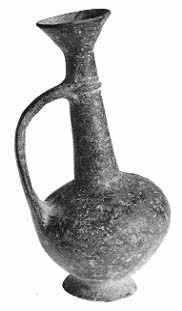
Why is a certain kind of pot that is frequently found in excavations in Israel called a “bilbil”?
The problem is not earth-shaking, even if archaeological. But, then again, like the apple that fell to the ground, it requires a solution.
I have seen several pots labeled “bilbils” both in the shops of antiquities dealers and, more recently, at the Brooklyn Museum of Art. At neither the antiquities dealers nor at the museum could I get an explanation of the name “bilbil.”
Some readers of this short communication may not know what a bilbil is and looks like, let alone why it is called a “bilbil,” so instead of calling on my own inexpert knowledge of the subject, I asked Joe Seger, Professor of Middle Eastern Archaeology at the Cobb Institute of Archaeology, Mississippi State University, and director of the excavations at Tell Halif (Lahav) in Israel, to provide a short explanation of what a bilbil is. This is his reply:
“The term ‘bilbil’ is a general designation used in more popular Near Eastern archaeological literature to describe the jugs and juglets of Cypriot-made Base Ring Ware I and II class vessels. These vessels have a distinctive form with a globular body set on a low, flaring ring or trumpet base, and with a tall neck that narrows slightly to a small, flaring mouth. The form is completed with the addition of a strap handle that runs from the neck just below the flaring mouth down to the shoulder of the globular body.
Already a library member? Log in here.
Institution user? Log in with your IP address.

